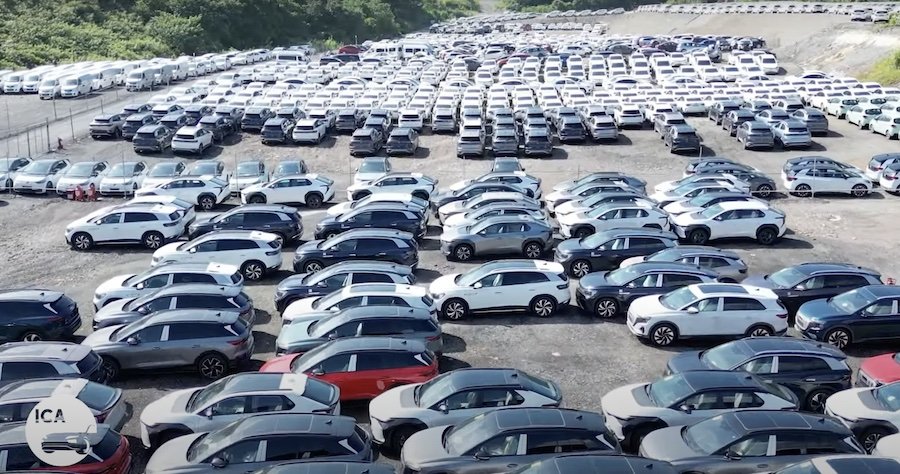China's EV Graveyard Story Is Not As Dramatic as You've Been Led To Believe

Around a month ago, pictures, videos, and texts about how China occupied vast land mass with defunct EVs circulated the globe. Detractors were quick to point out that zero-tailpipe emission vehicles contributed to increasing environmental pollution instead of fighting climate change.
Some of those reports claimed that Chinese manufacturers were trying to fake their sales numbers by hiding those EVs from the public and cataloging them as units that found themselves real buyers. It was also insinuated that China was telling carmakers to up their production numbers to make it look like the country was the global champion in EV production and sales.
Other claims said the "EV bubble" was bursting in China, and people were returning to gas- or diesel-powered cars. Some even said that the country's homegrown automakers were doing this to increase the state subsidies to keep the businesses afloat.
But none of that is true.
Some of the all-electric vehicles (mainly the Hozon Neta Vs) parked on that huge plateau in Banshen are from Uber-like ridesharing companies that went bust. They're either part of bankruptcy settlements that are not yet over or were left behind because nobody could use them legally until a transfer of ownership was possible.
Moreover, most of those EVs are five- or six-year-old. Thus, they wouldn't be of much help to balloon current sales statistics.
The other BAIC-made EVs found in that graveyard are from car-sharing companies that didn't succeed. Car sharing refers to vehicles drivers can rent in a couple of minutes via an app in exchange for a tailored fee. Ridesharing is what Uber or Lyft are doing in the US.
Car-sharing couldn't work in the Asian country because other means of transport were faster and cheaper, according to Inside China Auto. Moreover, using these cars, albeit small, meant users had to find free parking in crowded cities like Beijing.
Besides that, China's EV industry made a lot of progress in the last couple of years. These small EVs don't have impressive range figures or the latest tech, so their value has plummeted.
There are also new cars temporarily left in that area that are either set to be delivered or taken back by the manufacturer. The Toyota bZ4Xs, for example, are not very successful in China. They'll remain in that field until their future is decided.
The right move today would be for an automaker or a battery manufacturer to buy most of these units cheaply, recycle the critical minerals to put them back into circulation, and repurpose all the metal and remaining parts.
But nothing is leaking into the ground or heavily polluting the environment. The so-called "abandoned EV graveyard" is just a large storage area for battery-electric cars nobody wants to use (yet) or for vehicles that must find their rightful owners.
Lastly, China is the world's largest battery manufacturer, with six out of the ten most prominent companies in this space being headquartered in the Asian country. Around a quarter of the total auto sales in 2023 so far is represented by pure EVs. Some important brands like Lotus, Volvo, or Polestar are currently under Chinese ownership and are enjoying a comeback in Europe and North America.
Related News
